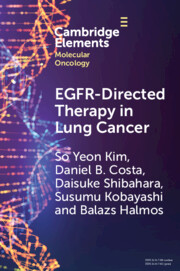Element contents
EGFR-Directed Therapy in Lung Cancer
Published online by Cambridge University Press: 05 January 2023
Summary
- Type
- Element
- Information
- Series: Elements in Molecular OncologyOnline ISBN: 9781009342285Publisher: Cambridge University PressPrint publication: 26 January 2023
References
- 1
- Cited by



